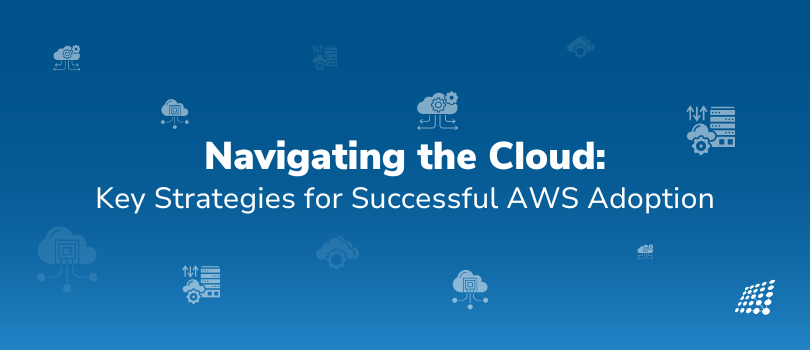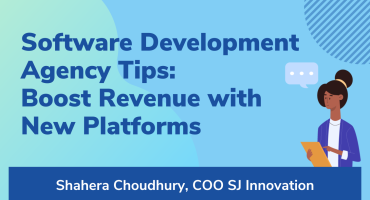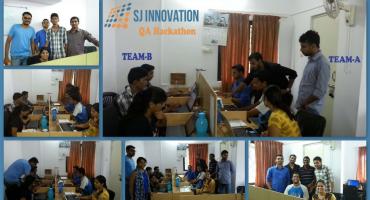Navigating the Cloud: Key Strategies for Successful AWS Adoption

Key strategies for successful AWS adoption, focusing on cost optimization, security, scalability, and best practices tailored for software developers, CEOs of SMEs, startups, and established software agencies.
To move to the cloud or not, isn’t the question. After all, software developers, CEOs of small or medium-sized enterprises (SMEs)/ startups/established software agencies will tell you that it’s the blueprint to achieve unparalleled scalability, flexibility, and cost-effectiveness.
Amazon Web Services (AWS), the world's largest platform, is the preferred cloud solution for all organization sizes. Adopting AWS requires a strategic approach, ensuring performance, security, and cost efficiency are optimally synced. This includes a strategy centered around how to sync cloud environments with business velocity, tech advances, and market shifts, both expected and unforeseen.
In this blog post, we'll explore some key AWS cloud adoption strategies, tailored for software developers, CEOs of SMEs, startups, and established software agencies. We'll explore key strategies for successful AWS adoption, focusing on cost optimization, security, scalability, and best practices tailored for software developers, CEOs of SMEs, startups, and established software agencies.
1. Maximize Value through Cost Optimization

Cost optimization is paramount for extracting maximum value from your AWS investment. By understanding usage patterns and leveraging the right cost optimization strategies, you can prevent expenses from spiraling out of control. AWS provides powerful tools like Cost Explorer, Cost and Usage Reports, and AWS Budgets to monitor and manage costs effectively.
Leverage Cloud Economics
- Pay for What You Use: Take advantage of AWS's flexible, pay-as-you-go pricing model. Adjust resources dynamically to optimize spend, benefiting from the cloud computing economies of scale.
- Capitalize on Discounted Plans: For predictable workloads, Reserved Instances and Savings Plans offer significant discounts over on-demand pricing. Lock in savings through committed usage over 1 or 3 years.
- Spot Instance Savings: Bid on spare compute capacity at heavily discounted rates with Spot Instances for additional cost reductions.
- Implement AWS Budgets: Establish AWS budgets with Cost Explorer, setting thresholds, and receiving alerts as spending approaches limits for proactive financial monitoring.
Utilize Cloud Cost Management Tools
- Gain Visibility with Cost Explorer: This powerful tool provides granular insights into your AWS spending. It becomes easier to visualize usage patterns across services, regions, and accounts to pinpoint optimization areas.
- Implement Cost Allocation Tags: Tag resources with metadata to track costs by project, team, or criteria. Enable precise cost attribution and targeted optimization.
- Follow Trusted Advisor Recommendations: Use AWS's personalized guidance to improve cost efficiency through customized best practice advisories.
- Optimize with Instance Diversification: Strategically combine on-demand, reserved, and spot instances to ensure resource availability while maximizing cost savings.
2. Prioritize Robust Security

Ensuring the security and compliance of your AWS environment is crucial, especially when handling sensitive data or operating in regulated industries. AWS provides a wide range of reliable security services and features, but their effective implementation requires proactive planning and ongoing monitoring:
Uphold the Shared Responsibility Model Cloud
While AWS secures the underlying infrastructure, you're accountable for securing applications and data within your environment. Understand this division of responsibilities.
Implement Identity and Access Management (IAM)
Implement identity and access management CMS. Enforce ‘least-privilege access principles’ and mandate ‘multi-factor authentication’ for enhanced security posture.
Encrypt Data In-Transit and At-Rest
Use AWS's encryption of data in transit and at rest, using S3 server-side encryption, SSL/TLS, and KMS solutions."
Utilize AWS Security Services
Utilize CloudTrail, Config, and GuardDuty for proactive detection and response, ensuring AWS security of the cloud.
Automate Security Best Practices
Use AWS automation tools to streamline deployment and continuous enforcement of security policies across your infrastructure.
Regularly Conduct Security Assessments
Continuously identify and remediate risks through penetration testing, vulnerability scans and assessments.
3. Scale Effortlessly to Match Evolving Demands

One of the primary advantages of AWS is its ability to scale resources on demand, enabling your applications and services to handle fluctuating workloads seamlessly. To leverage this scalability, consider the following strategies:
Implement Auto Scaling
Dynamically adjust compute resources with AWS Auto Scaling to match demand in real-time. Avoid overpaying for idle capacity while ensuring peak performance.
Utilize Elastic Load Balancing (ELB)
Distribute incoming traffic intelligently across multiple targets like EC2 instances with ELB. Attain high availability and resilience.
Optimize with Amazon ECS and Amazon EKS
Another critical scalability strategy is to use containerization and orchestration tools such as Amazon ECS and Amazon EKS so you can easily deploy and manage containerized applications at scale.
Design for Fault Tolerance
Design fault-tolerant applications by using AWS services like Amazon ElastiCache, Amazon RDS Multi-AZ deployments, and Amazon S3 to ensure data redundancy and durability.
Deploy with Confidence
Implement blue/green or canary deployments to validate new application versions before production rollouts, minimizing downtime risks.
4. Best Practices for Developers

Adopting DevOps practices and automating your infrastructure and application deployments can significantly streamline operations, reduce human error, and accelerate time-to-market. Here are some strategies to consider:
Utilize Infrastructure as Code (IaC)
IaC tools like AWS CloudFormation, AWS CDK, and Terraform enable you to define your infrastructure as code, allowing for consistent, repeatable, and version-controlled deployments.
Implement Continuous Integration and Continuous Delivery (CI/CD)
Use services like AWS CodePipeline, AWS CodeBuild, and AWS CodeDeploy to automate your build, testing, and deployment processes, ensuring rapid and reliable software delivery.
Adopt Cloud DevOps Best Practices
Foster a culture of collaboration between development and operations teams, implement monitoring and logging, and embrace agile methodologies for faster feedback loops and continuous improvement.
Serverless Architecture
Leverage AWS Lambda for event-driven, serverless computing. Make sure you pay only for the compute time consumed by your functions.
Leverage AWS Developer Tools
AWS provides a suite of developer tools, including AWS Cloud9 (a cloud-based IDE), AWS CodeStar (a unified software development and deployment tool), and AWS X-Ray (for analyzing and debugging distributed applications).
Best Practices for CEOs of SMEs, Startups, and Established Software Agencies

As a CEO, ensure your AWS adoption aligns with core business objectives through these strategic best practices:
Align AWS Strategy with Business Goals
- Involve stakeholders to understand AWS's impacts on revenue, customer experience, and agility.
- Ensure strategic alignment.
Optimize Total Cost of Ownership
- Evaluate TCO holistically - consider long-term benefits, operational efficiencies, and innovation potential beyond upfront costs.
Automate with Managed Services
- Reduce operational overheads by using AWS's fully managed services like RDS, Aurora, and DynamoDB.
Startups and SMEs: Agility and Growth
AWS Activate
- AWS Activate is a program designed to support startups with critical resources and expert guidance, enabling them to build scalable and cost-effective infrastructure
- It is open to all startups, including smaller, early-stage companies and more advanced digital businesses
Migration Strategies and Modernizing Legacy Applications

For established software agencies, legacy app modernization via AWS requires a strategy tailored to the application's complexity. The migration approach can vary based on the application's complexity and desired outcomes. The five common strategies are:
- Rehost (Lift and Shift): Move the application to AWS without significant changes for a quick, cost-effective migration.
- Refactor: Rearchitect parts of the application to leverage cloud-native features, enhancing performance, scalability, and cost-efficiency.
- Revise: Make minor modifications to optimize the application for the cloud environment.
- Rebuild: Rebuild the application from scratch using cloud-native technologies for maximum performance and scalability benefits.
- Replace: Opt for an existing cloud-based solution or develop a new one to replace the legacy system entirely.
Modernizing legacy applications
Modernizing legacy applications is crucial for established agencies to unlock the full potential of AWS. By doing so, they can:
- Improve scalability and performance through cloud-native features like auto-scaling and serverless computing.
- Enhance security and compliance using AWS's robust security services and certifications.
- Optimize costs by leveraging AWS's pay-as-you-go pricing model and rightsizing resources.
- Enable innovation by integrating AI, machine learning, IoT, and big data analytics into their applications.
In Summary…
Adopting AWS is more than a shift to cloud computing; it's an essential move for modernizing your business and securing a competitive edge. Success in AWS adoption relies on four pillars:
- Cost Optimization: Keep a vigilant eye on spending with AWS's budgeting tools and cost-saving pricing models.
- Security: Proactively manage the safety of your data and applications, taking full advantage of AWS's extensive security features.
- Scalability: Embrace AWS's capacity to scale with your business needs, ensuring you have the right resources at the right time.
- Best Practices: Integrate AWS's suite of development tools into your workflow for efficient, error-minimizing operations.
For business leaders, the focus should be aligning AWS integration with strategic business goals, leveraging managed services for efficiency, and considering the total cost of ownership when planning for the future. Agencies with legacy systems need bespoke strategies for migration and modernization to take full advantage of AWS’s capabilities.
AWS adoption is not just a technical decision—it's a strategic move that can propel software developers, CEOs of SMEs, startups, and established software agencies into a future of innovation, efficiency, and competitive edge. But you don’t have to navigate the complexities of AWS alone. The expertise of seasoned AWS developers can help your transition remain smooth and transformative. Contact our AWS professionals who are proficient in AWS cloud consulting services today to explore how these strategies can be precisely adapted to meet your unique business needs

Software Development Agency Tips: Boost Revenue with New Platforms

Xcode 9 Custom Templates


